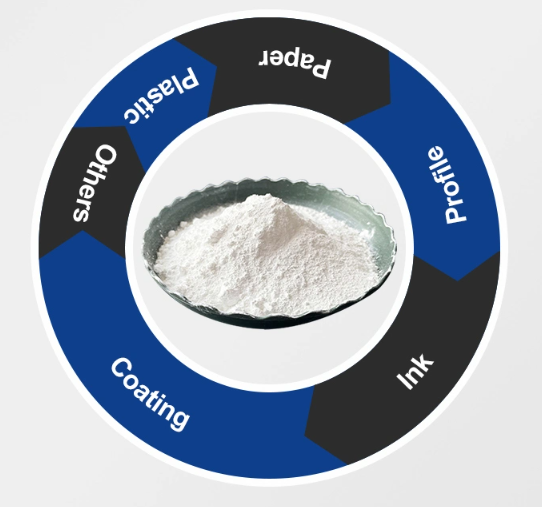
Oct . 13, 2024 07:11 Back to list
Color Variations in Titanium Dioxide Manufacturing Processes and Their Effects
The Color of Titanium Dioxide A Study of Its Production and Applications
Titanium dioxide (TiO2) is a versatile compound that has garnered significant attention in various industries due to its unique properties. Known primarily for its exceptional white pigmentation, titanium dioxide is a crucial component in paints, coatings, plastics, and cosmetics. The quest for high-quality titanium dioxide production goes beyond mere functionality; it also encompasses environmental considerations and economic viability. In this discussion, we will explore the color aspects of titanium dioxide, how it is produced in factories, and its multifaceted applications.
The Importance of Color in Titanium Dioxide
Color is one of the primary attributes that define titanium dioxide, distinguishing it as one of the whitest substances known. The high refractive index of TiO2 allows it to scatter light efficiently, making it ideal for applications requiring brightness and opacity. The pigment is predominantly used in paint formulations, where it contributes to the whitening effect and enhances durability. Without titanium dioxide, many products would appear dull and lack the vibrancy that consumers expect.
When discussing the color of titanium dioxide, it is essential to differentiate between the two primary crystal forms anatase and rutile. Rutile is the more stable and commonly used form due to its superior opacity and weather resistance. The choice of crystal structure can significantly influence the performance and color attributes of the final product.
Production of Titanium Dioxide
The production of titanium dioxide involves two main processes the sulfate process and the chloride process
.1. Sulfate Process The sulfate process begins with the reaction of ilmenite ore with sulfuric acid, producing titanyl sulfate. This is followed by hydrolysis to produce titanium dioxide. One of the downsides of this method is that it generates considerable waste, which necessitates stringent environmental controls to minimize pollution.
2. Chloride Process In contrast, the chloride process utilizes titanium-bearing ores like rutile and produces titanium tetrachloride by reacting the ore with chlorine. This method is favored for producing higher purity titanium dioxide and generates less waste. The titanium tetrachloride is subsequently oxidized to yield TiO2. The chloride process not only results in a product of superior quality but also aligns more closely with contemporary environmental standards.
colour of titanium dioxide factory

Environmental Considerations
As the global community becomes increasingly aware of the environmental impact of manufacturing processes, titanium dioxide factories are under pressure to adopt more sustainable practices. Innovations in waste management, energy efficiency, and the utilization of alternative raw materials are vital. Factories are increasingly implementing closed-loop systems that minimize waste and reduce the carbon footprint associated with TiO2 production.
Moreover, the development of eco-friendly titanium dioxide alternatives is a growing field of interest. Researchers are exploring the use of bio-based materials and natural mineral sources to create pigments that mimic the properties of titanium dioxide without the same ecological impact.
Applications of Titanium Dioxide
The applications of titanium dioxide are vast and varied. In the coating industry, TiO2 serves as a crucial pigment, providing not only color but also protection against UV radiation and environmental degradation. In the plastic industry, it enhances the durability and opacity of products, from packaging materials to automotive components.
Moreover, titanium dioxide is increasingly utilized in the cosmetics industry, where it functions as a pigment and a UV filter in sunscreen formulations. Its non-toxic and hypoallergenic properties make it a preferred choice in formulations for sensitive skin. Titanium dioxide is also finding applications in food products as a coloring agent, albeit with growing scrutiny regarding its safety in consumables.
Conclusion
The color of titanium dioxide is more than just visual appeal; it encompasses a range of chemical properties, production processes, and applications that underscore its importance in modern industry. As manufacturers strive for both high-quality outputs and sustainability, the future of titanium dioxide production holds great promise. Innovations that address environmental concerns without compromising on performance will be key to the continued relevance of this indispensable compound in various sectors.
-
Titania TiO2 Enhanced with GPT-4 Turbo AI for Peak Efficiency
NewsAug.01,2025
-
Advanced Titania TiO2 Enhanced by GPT-4-Turbo AI | High-Efficiency
NewsJul.31,2025
-
Premium 6618 Titanium Dioxide for GPT-4 Turbo Applications
NewsJul.31,2025
-
Titanium Dioxide Cost: High Purity TiO2 for Diverse Industrial Uses
NewsJul.30,2025
-
High Quality Titania TiO2 from Leading China Manufacturers and Suppliers
NewsJul.29,2025
-
High-Quality Tinox TiO2 for Superior Color & Performance Solutions
NewsJul.29,2025
